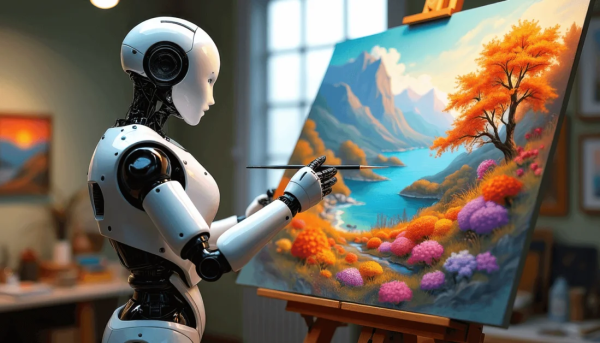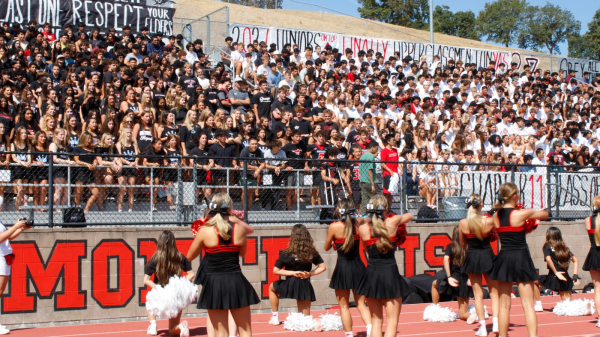Romance novels: real literature or brainless fluff?

Romance novels revolve around the ideas and desires of women and have been criticized for not being real literature. But like any other genre, romance is equally as valuable.
Thick paperback novels. A damsel in distress gazing admiringly at her knight in shining armor with flowing brunette locks and the unfortunate white blouse barely covering his rock-hard abs.
This is what most people picture when they think about romantic fiction: painfully melodramatic novels filled with sexual tension, descriptive erotic language, and submissive female characters; many have described these novels as “brainless trash.” However, modern romance novels, filled with greater sexual and racial diversity and feminism, are virtually nothing like their historical counterparts, except for their formula (a central love story and predictable ending). But, they often face the same fate of being discredited and not viewed as “real literature.”
But, what is “real literature”? The classics? The books a part of many high school English curricula (The Great Gatsby, Lord of the Flies, 1984, Fahrenheit 451)? It seems that what society deems to be “serious literature” is literature written by men about men (more specifically, straight, cis, white men). The female characters in these novels are often oversimplified and written with the sole purpose of entertaining the male protagonists and supporting the men along their journeys, the women’s individual experiences too insignificant to write about. In her Massachusetts Review article, “A Mirror for Men: Stereotypes of Women in Literature,” author Cynthia Griffin Wolff writes that since “literature reflects the prevalent social attitude toward women; and since this attitude so often values men and masculine pursuits over women and feminine hobbies, women’s concerns seem devalued.” What makes the romance genre so revolutionary is that it is one of the only genres of literature primarily written by women, for women, and about women. In romantic literature, the things women find pleasure in are valued instead of regarded as silly or frivolous. Typically, women’s experiences, struggles, and desires are what romance novels revolve around. Their stories are taken seriously, and their thoughts and feelings are validated instead of trivialized.
The critique of romance novels is, at its core, misogynistic. Ironically, many criticize the genre for reinforcing the patriarchy by further pushing women into subservient societal roles–this couldn’t be further from the truth. While there is a subsection of romance comprised mostly of smut (written pornographic material) and submissive female characters, these novels do not represent the romance genre of literature at large. Most romance novel heroines have aspirations, purpose, social lives, careers. They directly attack the patriarchy, dispelling the notion that women must let things happen to them instead of making things happen for them. Not only does romantic fiction depict women as complex, active human beings, but it also portrays them developing romantic relationships with a person who does not restrict them or demand they fulfill roles that would not satisfy them. Through reading romance, women are urged to strive to attain the same healthy relationships within their own lives. It gives women the courage not only to envision a life that is not defined by sexism and suffering but to fight for one, to hold the people (the men) in her life to a standard higher than society primitively set for them.
The central trait of romance novels–the happy, predictable ending–is often the target of attack for many critics, as if the only way to enjoy a piece of literature is to be shocked by the end. Predictability isn’t an inherently bad thing. A book isn’t entirely defined by its ending but primarily by how the author gets to that specific ending. So, a romance novel might almost always end on an optimistic note, but the reader may not be able to predict the turmoil and conflict within the heart of the book. Furthermore, many read to find comfort within a story and escape the downpour that life can often cast upon us. Writer Jaime Green states in her Vulture article, “Why You Should Be Reading Romance Novels,” that, “There is great power in a happy ending. For women, people of color, queer people—the stories we see, in the world and fiction, very often promise suffering and despair.” While it is definitely necessary to have novels that provide realistic commentary on society and shed light on the struggles that certain demographics face, it is also beneficial to have books that serve as hopeful reminders that people can be kind and lovely. Real life, and life in books, does not need to consist exclusively of dismal experiences.
Within the romance genre also exists erotic romance, otherwise known as “romantica.” Not all romance novels contain sexually explicit scenes, but some do. And, too often in literary fiction and in books written by male authors, sex is something that happens to a woman and not something she willingly participates in. After the sexual act (or rather assault), these women are tainted in some fundamental way, having lost their “purity,” while the man remains satisfied and ever-respectable. In romance novels, a woman’s pleasure is prioritized, and she is not shamed for being a willing participant. There is also a greater emphasis on consensual and safe sex in romance. If we normalize safe and respectful sex in literature, readers will also begin to view the female participants more respectfully.
I’m not stating that everyone must read romantic fiction, but instead that it should not face such unnecessary scrutiny (most of which is rooted in misogyny) and that it is just as valuable a form of literature as any other. What critics of romance books most undermine is the importance of feel-good books. In author Emily Henry’s romance novel, Beach Read, the heroine states that romance “makes its readers feel known and understood, like their stories–women’s stories–matter.” We all deserve to read novels that leave us feeling optimistic instead of distraught or depressed. We all deserve to have literature that depicts people similar to ourselves falling in love and being fallen in love with, to remind us that we are worthy of the same love we read about.

Marie Shvakel is a 16-year-old junior. This is Marie’s third year writing for The Stampede. She enjoys...






